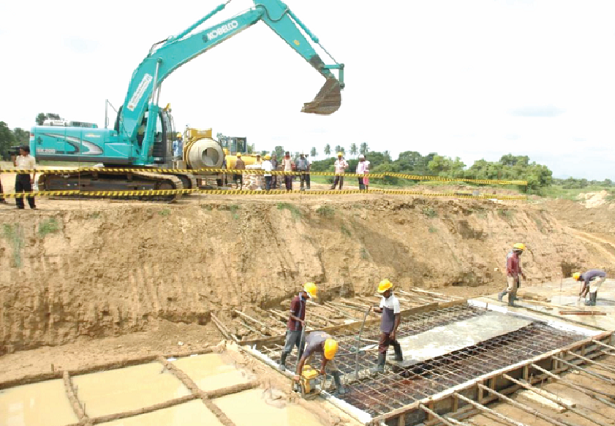
One-Village-One-Dam - adopting a community-driven approach for sustainability
‘One-Village-One-Dam’ is now a political phrase that all Ghanaians in-country or abroad understand. The notion was part of the 2016 Election campaign of the New Patriotic Party (NPP) and its aim is to provide water for agricultural activities in the communities of the three northern regions of Ghana.
Advertisement
But is this feasible within four years? There are those who doubt that it can be achieved at all. But that's not the angle I am coming from. Surely once a political party has made a promise to the electorate, it has no option but to deliver.
President Mahama's NDC’s failure to deliver the 200 senior high schools (SHSs) it promised, and the massive defeat at the December 2016 polls are too fresh in the minds of President Nana Akufo-Addo's NPP. To deliver One-Village-One-Dam means a dam each in approximately 7,000 communities in four years.
Community-driven approach
The angle I am coming from is that under such immense pressure, there could be the temptation to simply construct the dams the way boreholes used to be done some two or three decades back. A team of engineers and workers appear with a drilling equipment, meet the chief and his elders to exchange pleasantries and inform them of their mission.
The chief and his elders give them their blessings and bingo, they are off to drill and move to the next village. No community participation in the siting of the borehole, its management and maintenance.
Two or three years after (if we are lucky) a team arrive to evaluate the impact of the borehole on the health and living standards of the people only to find to their horror that the community has stopped using it, sometimes only days after it was commissioned.
Common reasons community members have given for this in the past include: ‘we don't like the taste of the borehole water’, ‘we prefer the river water our forefathers have drunk from time immemorial’, ‘the borehole pump broke down and no one in the community has been trained to undertake basic maintenance and repairs’.
Sadly, these stories are all too familiar and these mistakes of the past must be avoided at all cost, when it comes to the One-Village-One Dam Project. If anyone thinks that the active participation of communities is expensive, the evidence of the cost of non-participation is there for all to see.
A classic example is the markets that were constructed across the country under the MoFA AgSSIP project funded by the World Bank, EU, Danida, African Development Bank, etc. from 2001 to 2010. Some remain unoccupied to this day.
Steps to be taken
To avoid the errors of the past, the managers of the One-Village-One-Dam initiative should start taking the following steps before they even cut the sod to begin the construction of the first dam. The driving principle should be that the design, construction, maintenance, and management of the dams must be community-driven. This means that the community members (not only leadership but the entire members):
(1) Must be supported to do their own analysis of the need for a dam and what uses they can put the dam to;
(2) Constitute a committee (of which, where possible, 60% should be women and youth) to work with the project managers before, during and after the construction of the dam;
(3) Through their committees, must be involved in the decision of where to situate the dam;
(4) raise funds from residents and those living outside the community towards the construction or maintenance of the dam;
(5) Be assisted to put a maintenance plan in place;
(6) The committee be trained by project managers at the district level to manage and maintain the dam and informed of who to contact at the district level when there are issues beyond their capability.
The above process, if taken seriously, will ensure a strong sense of community ownership over the dams and, therefore, the chances of their use, maintenance and long-term success. This process of community participation in the implementation of the initiative is not cheap and must be included in the project budget.
The structures needed to facilitate this sense of community involvement or ownership already exist. The Community Water and Sanitation Agency (CWSA), the Department of Community Development, and the numerous non-state development organisations working at district levels across the country are available for such a task.
They must be deployed in good time prior to the start of the project, not least to educate the recipient communities about their expected role during the project.
Advertisement
These organisations are in a good position to continue to support communities and the project to do some of the community-driven processes listed above, during and after the dams have been constructed.
Conclusion
In conclusion, for the One-Village-One-Dam project to achieve its purpose of improving agricultural production in northern Ghana and alleviating poverty, the process of community engagement, participation and ownership is as important (if not more important) than the construction of the dams.
The process of working with the communities must both precede the construction and be continued during and after the construction of the dams.




